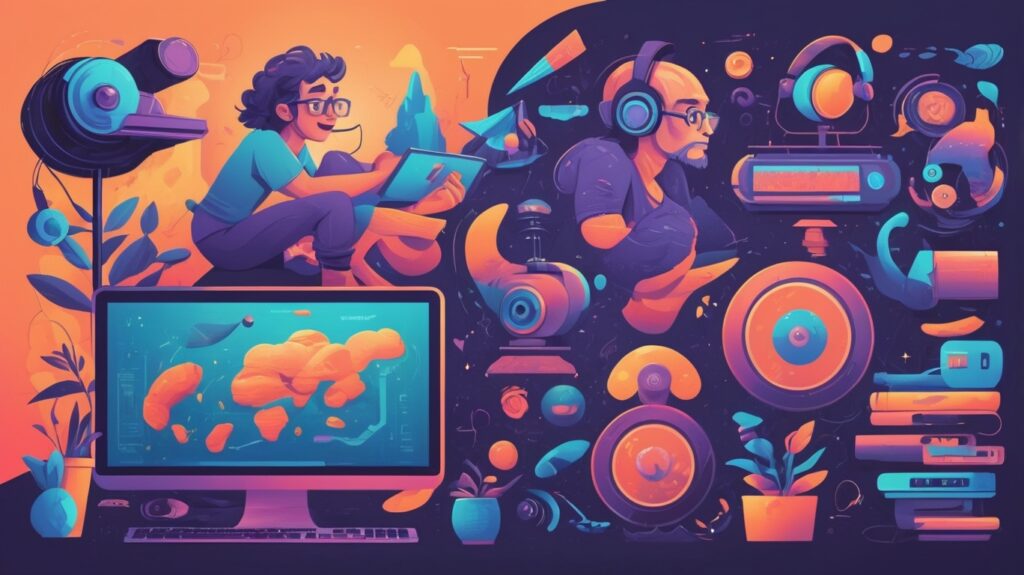
Table of Contents
In the past decade, the way we consume entertainment has undergone a revolutionary transformation. Streaming platforms have shifted the paradigm, moving us away from traditional forms of media like cable TV and DVDs to an on-demand, internet-based model. From Netflix to Disney+, these platforms have become an integral part of our daily lives, offering a vast library of content at our fingertips. This article delves into the evolution of streaming platforms, their impact on traditional entertainment, and what the future holds for this dynamic industry.

The Origins of Streaming Platforms
The concept of streaming dates back to the early days of the internet, but it gained real traction in the early 2000s. Platforms like YouTube (founded in 2005) introduced the idea of on-demand video content, allowing users to upload and watch videos anytime. However, the real game-changer was Netflix. Initially a DVD rental service, Netflix shifted its business model in 2007 to offer streaming services, marking the dawn of a new era.
The advent of high-speed internet and advancements in compression technology made streaming more feasible. Viewers no longer had to wait for downloads; they could instantly play videos, changing the way content was consumed.
Rise of Major Players
Netflix’s success inspired the launch of other streaming services, each aiming to capture a slice of the rapidly growing market. Some of the most notable platforms include:
- Amazon Prime Video (2011): Leveraging Amazon’s vast infrastructure, Prime Video became a strong contender by bundling streaming services with Amazon Prime subscriptions.
- Hulu (2007): Known for its focus on TV shows and next-day airing of popular series.
- Disney+ (2019): Offering a library of Disney classics, Marvel, Star Wars, and National Geographic, Disney+ quickly became a household favorite.
- HBO Max, Apple TV+, Peacock, and more: Each platform carved out a niche by offering exclusive content and original programming.
These platforms not only competed for viewers but also heavily invested in producing original content, leading to what is often called the “Streaming Wars.”
The Decline of Traditional Media
Streaming platforms disrupted traditional media in unprecedented ways. Cable TV, once the dominant form of home entertainment, began to lose subscribers at an alarming rate. The phenomenon, often referred to as “cord-cutting,” reflected viewers’ preference for more flexible, affordable options.
- Accessibility: With streaming, viewers could watch what they wanted, when they wanted. No longer bound by TV schedules, they embraced on-demand content.
- Cost: A single subscription to Netflix or Hulu was significantly cheaper than traditional cable packages.
- Global Reach: Streaming platforms transcended geographical barriers, allowing people worldwide to access the same content.
As a result, the entertainment industry shifted its focus. Studios that once relied on box office releases or TV deals began creating direct-to-streaming content, further diminishing the dominance of traditional media outlets.
The Rise of Original Content
One of the most significant developments in streaming platforms has been the emphasis on original content. Netflix pioneered this trend with the release of House of Cards in 2013, a critically acclaimed political drama. Its success proved that streaming platforms could not only distribute content but also create it.
Since then, platforms have invested billions in original programming. From Amazon’s The Marvelous Mrs. Maisel to Disney+’s The Mandalorian, original content has become a major selling point. Exclusive shows and movies attract subscribers and establish the platform’s unique identity.
Cultural Impact
Streaming platforms have had a profound impact on global culture. By providing access to a vast array of content, they have democratized entertainment in several ways:
- Diverse Storytelling: Streaming services showcase stories from around the world, amplifying voices that were often overlooked by traditional media. Shows like Money Heist (Spain), Squid Game (South Korea), and Dark (Germany) have gained international acclaim, breaking language and cultural barriers.
- Binge-Watching Culture: The ability to watch entire seasons of a show in one sitting has created a new phenomenon—binge-watching. While it offers convenience, critics argue it may contribute to unhealthy viewing habits.
- Niche Content: Streaming allows for more experimental and niche programming, catering to specific audiences. From documentaries to anime, there’s something for everyone.
- Revivals and Sequels: Popular shows like Arrested Development and Gilmore Girls found new life on streaming platforms, proving the enduring appeal of beloved series.
Challenges and Criticisms
Despite their success, streaming platforms face several challenges:
- Content Overload: With so many platforms and options, viewers often feel overwhelmed, leading to the phenomenon known as “subscription fatigue.”
- Cost Concerns: While streaming was initially seen as a cheaper alternative to cable, the proliferation of services has led to rising costs. Subscribing to multiple platforms can be as expensive as traditional cable.
- Piracy: Easy access to high-quality content has also led to an increase in piracy, posing a significant challenge for the industry.
- Sustainability: The intense competition in the streaming market has forced platforms to spend heavily on content creation, raising questions about long-term profitability.
The Future of Streaming Platforms
The evolution of streaming platforms is far from over. Emerging trends suggest exciting possibilities for the future:
- Integration of AI and Personalization: Platforms are increasingly using AI to recommend content, creating a more personalized viewing experience.
- Interactive Content: Netflix’s Bandersnatch demonstrated the potential for interactive storytelling, where viewers can influence the narrative.
- Live Streaming: Platforms like Amazon Prime Video are venturing into live sports streaming, expanding their offerings beyond pre-recorded content.
- Global Expansion: As internet penetration increases in developing countries, streaming platforms are targeting new markets with region-specific content.
- Virtual Reality (VR): With advancements in VR technology, immersive experiences could become the next frontier in streaming entertainment.
Conclusion
The evolution of streaming platforms has redefined how we consume entertainment. From breaking down geographical barriers to fostering a culture of binge-watching, they have changed our viewing habits forever. While challenges like content saturation and rising costs remain, the future of streaming platforms looks promising, with innovations like AI and VR poised to further revolutionize the industry.
As we continue to embrace this digital age, one thing is certain—streaming platforms are here to stay, shaping the entertainment landscape for generations to come.

One Comment